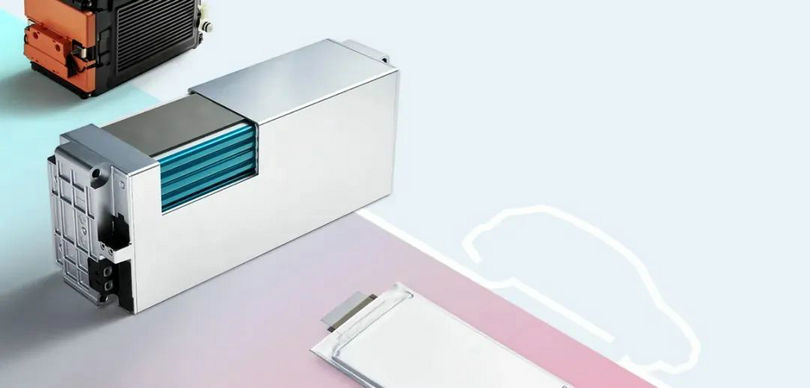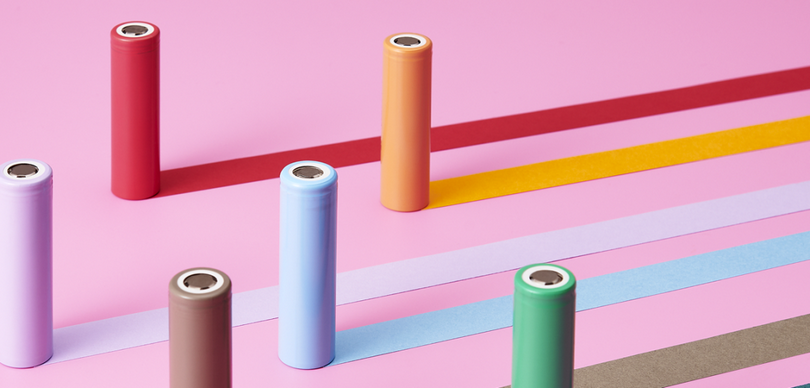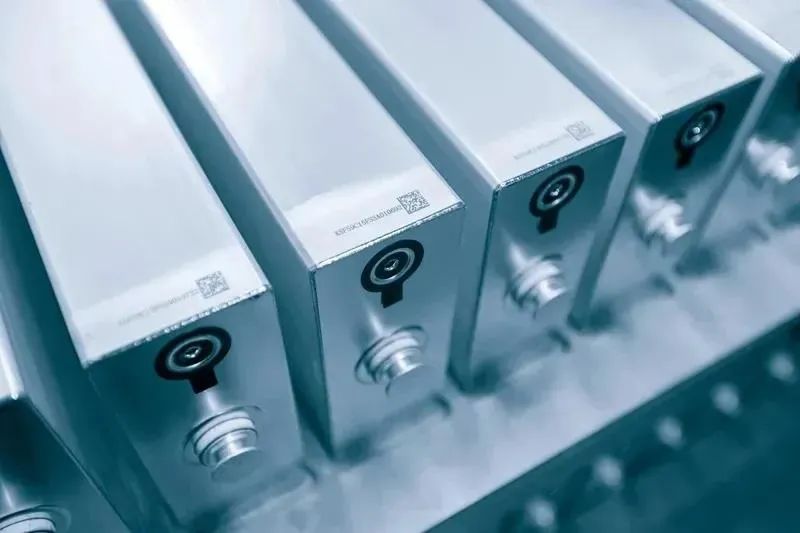| Solid state battery starts the mass production competition |
| Release time:2023-01-05 14:32:08| Viewed: |
Solid state battery starts the mass production competition
Solid state battery is preparing for the new "air vent".
Recently, Dongfeng Motor said that it was developing the second and third generation of solid state batteries, as well as independent ceramic nuclear power cells, to lay out the whole value chain technology ecology of solid state batteries. Among them, the second generation solid state battery is expected to be mass produced in the first half of 2024, when the vehicle's endurance mileage can reach more than 1000 kilometers.
Almost at the same time, many related enterprises have also unveiled their solid state battery production schedules. Honeycomb Energy, a subsidiary of Great Wall Motors, plans to mass produce solid state batteries in 2025. Wei Lan New Energy said that it will mass produce all solid state batteries in 2026 as soon as possible, while Nissan's solid state batteries will be mass produced in 2028. Wei Lai Automobile announced that it will launch ET7 cars equipped with solid state batteries to the market in 2023... Who will be the first to mass produce solid state batteries, attracting much attention.
01 Who is laying out solid state batteries
At present, more and more automobile enterprises, battery enterprises and material enterprises are deploying solid-state batteries.
"Dongfeng Motor is one of the earliest automobile enterprises to develop solid state batteries in China." Liu Min, senior R&D manager of the prospective research center of Dongfeng Technology Center, told reporters that since the establishment of the solid state battery team of the prospective research center of Dongfeng Technology Center in 2018, the solid state battery technology designed and developed by the team has achieved a breakthrough in the technology from key materials to cells to the "choke" of the system, It is expected to further alleviate the "mileage anxiety" of new energy owners. In January this year, the Dongfeng Ganfeng high specific energy solid state battery E70 demonstration operation vehicle jointly developed by Dongfeng Technology Center and Ganfeng Lithium Industries was officially delivered, and the vehicle has been approved by the Ministry of Industry and Information Technology of the People's Republic of China as New Energy Vehicle Models Exempted from Vehicle Purchase Tax (the 51st batch). At present, there are 50 Dongfeng Fengshen E70 equipped with solid state batteries in 4 provinces and 8 places across the country, and the demonstration operation mileage has reached 350000 kilometers so far.
Although the enterprises related to the development of solid state batteries are quietly following their own path, in fact, a new competitive situation has been formed in this field. In 2021, Weilai Automobile released a semi-solid battery pack product with a single energy density of 360Wh/kg, and said that it would be carried on the first car ET7 of Weilai. However, its original plan to launch in the fourth quarter of 2022 seems to have been difficult to achieve, so it was postponed to 2023.
In May this year, Guoxuan Hi Tech released a semi-solid battery at the 11th Science and Technology Conference of the company, whose cell energy density also reached 360Wh/kg, which is expected to be mass produced in early next year. "The battery cells of lithium ion batteries include positive and negative electrodes, electrolytes, diaphragms, etc. The semi-solid batteries follow the technical route of electrolyte upgrading to improve energy density." Xu Xingwu, vice president of Guoxuan High tech Engineering Research Institute, said in an interview with reporters that the evolution of electrolyte materials is developing from electrolyte to semi-solid electrolyte, quasi solid electrolyte, and all solid electrolyte. Therefore, semi-solid batteries All solid state battery. The 400Wh/kg semi-solid battery of Guoxuan High Tech has prototype samples. In the future, it will strive to achieve full solid state through technology innovation, such as landing silicon based negative electrode iteration, lithium metal negative electrode and other technologies.
Up to now, domestic enterprises such as Huineng Technology, Qingtao Energy and Weilan New Energy have publicly stated that they have the capacity to mass produce semi-solid batteries. In foreign countries, Mercedes Benz, BMW, Ford, General Motors, Hyundai, Toyota, Honda and other vehicle enterprises, as well as LG New Energy and other power battery enterprises, have made layout.
Interestingly, recently, in response to the rumors on the market that "BYD's all solid state lithium battery is produced in Chongqing and will be loaded for testing", BYD officially "refuted the rumor" and called it untrue information.
02 Who will take the lead in mass production
In fact, due to technology and production process, most domestic enterprises claim that the solid state batteries that can be mass produced are semi-solid state batteries. Ouyang Minggao, an academician of the CAS Member, once said at the annual meeting of the China Electric Vehicle Hundred Talents Association that "the time when solid state batteries are really put into large-scale commercial application is probably between 2025 and 2030."
Qingtao Energy, established in the same year as Weilan New Energy, has built a domestic semi-solid lithium battery production line. At present, the company's first generation semi-solid battery has a liquid content of 5%~15%, and the maximum energy density is 420Wh/kg. Its cost is comparable to that of liquid lithium batteries widely used today. The second generation of products is in the stage of small test, with the liquid content reduced to below 5%, the energy density reaching 400 Wh/kg~500 Wh/kg, and the cost reduced by 20% compared with the liquid lithium battery. It is expected to be mass produced in 2024.
China Innovation Airlines disclosed that the company has been doing research and development of solid state batteries, first in lean liquefaction, then in semi-solid state, and finally in solid state. In terms of energy density, lean liquefaction will reach 400Wh/kg, semi-solid will reach 450Wh/kg, and quasi solid will reach 500Wh/kg. However, it did not disclose the time of mass production of these new products.
Globally, many related enterprises are also speeding up on the track of solid-state battery mass production. In April this year, Nissan released the prototype of its Yokohama factory's solid-state battery production equipment, and plans to establish an all solid state battery trial production line in 2024, and bring all solid state batteries to the market in 2028. In the same month, Honda released its electric vehicle business plan for 2030. It is mentioned that the demonstration production line of all solid state batteries will be launched with an investment of about 43 billion yen (about 2.2 billion yuan), which is planned to start in the spring of 2024. Toyota plans to achieve small-scale mass production of all solid state batteries by 2025, and first install them on hybrid vehicles. By 2030, all solid state batteries will achieve continuous and stable mass production.
In the schedule released by Hyundai Motor, it is planned to pilot produce electric vehicles equipped with solid state batteries in 2025, and achieve full mass production around 2030. LG New Energy is expected to achieve mass production of all solid state batteries in 2026. BMW plans to launch prototype vehicles equipped with solid state batteries by 2025 and achieve mass production by 2030.
In the United States, Solid Power, a developer of solid state batteries for electric vehicles, announced in June this year that it had completed its automated solid state battery production line and started trial production. It is reported that this production line will put new sulfide solid state batteries into production. Subsequently, Solid Power will test the new solid state battery and deliver it to Ford, BMW and other auto enterprises in the future.
03 What are the technical bottlenecks
It is widely believed in the industry that it will take at least a few years before all solid state batteries are expected to achieve mass production. This is because the technical and technological problems of all solid state batteries have not been completely solved, and the cost is high.
"In the current solid state battery industry, there are three mainstream technology routes, namely polymer, sulfide and oxide." Professor Qi Lu, director of the New Energy Materials and Technology Laboratory of Peking University, told reporters that currently, the main route in China is the oxide route. Japan and South Korea are committed to the sulfide technology route. Europe follows the polymer route, while the United States is promoting multiple routes at the same time, but each route has strengths and technical bottlenecks.
The oxide technology route adopted by most domestic enterprises has good conductivity and stability, and the ionic conductivity is higher than that of polymers. The thermal stability is close to 1000 degrees. At the same time, the mechanical stability and electrochemical stability are also very good. However, the oxide all solid state battery has the problem of high porosity, which makes the oxide system unlikely to be an all solid state battery. At present, the research and development in China is in the semi-solid direction of solid-liquid mixing, which will have better energy density and lower cost.
Sulfide solid state battery has the highest conductivity among the above three material systems, but its thermal dynamic stability is poor, so how to maintain high stability is a big problem. One solution is to coat the outer layer, but increase the resistance of the battery. In addition, sulfide still cannot avoid the generation of lithium dendrite, and the preparation process is relatively complex, because sulfide is easy to react with water and oxygen in the air to produce hydrogen sulfide toxic gas. This will take time to solve process problems and will increase costs. However, the potential of sulfide solid state battery is the largest. Toyota has invested a lot of time and money in research in this field, and it has the largest number of sulfide solid state battery patents in the world.
Polymer solid state battery is the first to realize loading test, which has the advantages of easy processing, compatibility with existing production equipment and process of liquid electrolyte, and good mechanical performance. However, its disadvantage is that its conductivity is too low, and it needs to be heated to 60 ℃ high temperature to work normally; Moreover, its stability with lithium metal is poor, and it cannot be adapted to high voltage cathode materials, so its energy density is limited. However, the safety of polymers at high temperatures has not been greatly improved. Therefore, although polymer is the first to be promoted among the three technical routes, it has not been widely used.
"On the one hand, many enterprises are relatively pragmatic in their research on solid state batteries and are rapidly advancing; on the other hand, those who master the complete set of technologies of solid state batteries in the future will be able to master the core of new energy power and take the lead in seizing the global market, which may be the real reason why many enterprises are making great efforts to accelerate the early mass production of solid state batteries." Xu Xingwu said. |






